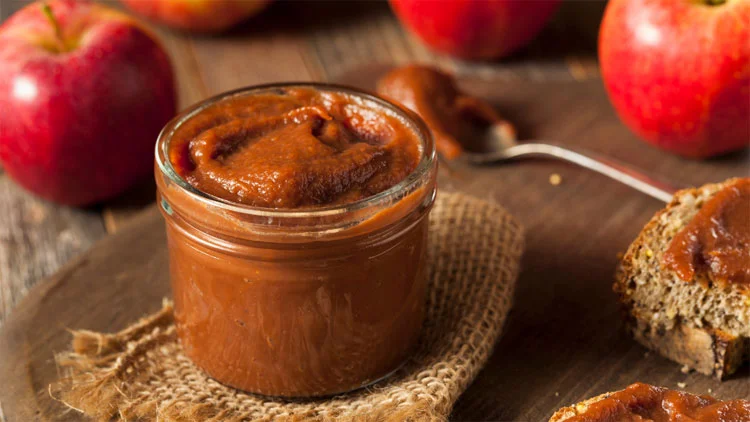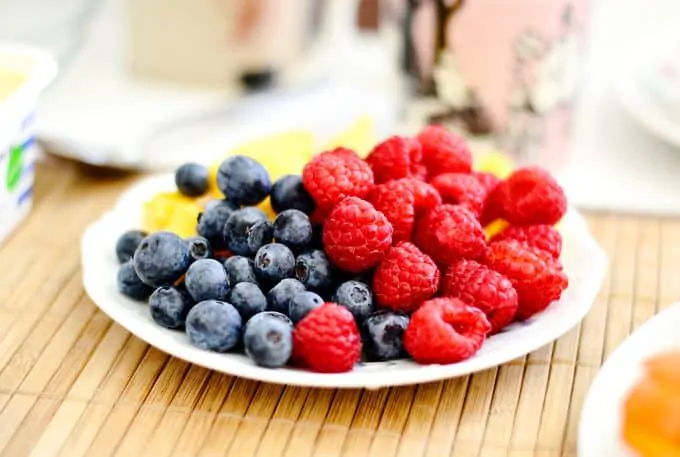Last Updated on September 27, 2022 by Dr Sharon Baisil MD
Introduction
Apples are cooked with sugar, spices, cider, and vinegar to make apple butter. Apples are delicious, nutritious, and easy to consume. In addition, they are thought to be healthy for you. On the other hand, apples have carbohydrates that may impact blood sugar. Diabetes is a serious health condition that affects roughly 24.1 million Americans, according to the National Diabetes Statistics Report. Your risk of cardiovascular disease, stroke, and eye diseases is higher if you have diabetes. And if you’re a person with diabetes who also consumes apple butter, you’re at an even greater risk. The advantages and risks of adding apple butter to your diabetes diet will be discussed in this article.
What about apples? Are they diabetic-friendly?
It’s crucial to monitor your carbohydrate intake if you have diabetes. Carbs have the most excellent effect on your blood glucose levels because they are composed of three macronutrients: fat, protein, and carbs. However, not all carbohydrates are created equal. For example, a medium apple has 27 grams of carbs with 4.8 grams of fiber.
Fibers delay the breakdown and absorption of calories, which slows how quickly your blood sugar levels rise. According to studies, fiber may help prevent type 2 diabetes, and several fiber types may help you manage your blood sugar.
As a result, carbohydrates in apples may boost blood glucose. Apples, on the other hand, help maintain blood glucose levels while offering a variety of health benefits. Apples do have sugar, but it’s mostly fructose. However, eating whole fruit on blood sugar is negligible.
In addition, polyphenols, which are found in apples, may also lower blood sugar levels by slowing down the digestion of carbohydrates. However, apples have a low glycemic index (GI) and glycemic load (GL), which means they’ll raise blood sugar levels only modestly.
Apple Butter vs. Apple Sauce
Apple sauce and apple butter are comparable. As a significant distinction, applesauce is made with water and sugar rather than milk and spices. Applesauce is sometimes consumed as a snack or side dish, and apple butter is used as a sauce or topping for bread or muffins, with its more robust concentrated flavor.
The apple butter you make will be affected by the apples you choose. Try Braeburn and Pink Lady apples, which are both sweet and mellow. Since apple butter takes a long time to cook, pick apples that are soft and break down quickly because they give the smoothest consistency.
Health Merits of Apple Butter
Apple butter is a caramelized apples and sugar mixture used to top bread and pastries. Jams, jellies, and butter are all replaced with this.
__________________________________
⭐ Check out this Flipbook with 30-Day Diabetic Meal Plan based on Foods from Each Indian State ⭐
(click on the ▶ arrow below to scroll the pages and 🔍 button to enlarge)
_____________________________
1 – Good amount of calories
Apple butter has 120 calories in a 1/4 cup serving. This accounts for 6% of the calories you may consume daily based on a 2,000-calorie diet. Count the calories in the overall meal, including this food in your diet plan, since it’s uncommon to eat a serving of apple butter on its own.
2 – Prevents obesity
Apple butter may be a filling option compared to other comparable spreads like fruit jelly due to its fiber content. If eaten in moderation, it may be a healthy option. In most jellies, fiber is rare.
3 – Aids in constipation
Apple butter’s fiber has the potential to help prevent constipation, although it would take a lot of it for that to happen.
4 – May improve insulin sensitivity
Apple extracts include plant chemicals that may improve insulin sensitivity and resistance. Insulin resistance may be reduced, resulting in lower blood glucose levels if apples are eaten regularly. Apples’ polyphenols, most prevalent in the fruit’s skin, help your pancreas release insulin and allow glucose to enter your cells.
5 – May reduce the risk of diabetes
Apples and pears were linked to a lower risk of cardiovascular disease and type 2 diabetes, according to a 2019 review of research. In addition, three cohort studies published in 2013 showed that whole fruits, particularly blueberries, grapes, and apples, were linked to a lower risk of type 2 diabetes. The same was not true of fruit juice, however.
Antioxidants in apples may be responsible for some of the reasons apples might help prevent diabetes. Antioxidants are chemicals that inhibit harmful bodily processes. As a result, they offer a variety of health advantages, including preventing chronic illness.
How to prepare diabetic-friendly apple butter?
Since they are rich in flavonoids, polyphenols, fiber, antioxidants, vitamins, and nutrients, apples are one of the healthiest fruits for people with diabetes. 11 grams of sugar per 100 grams.
Apples are a healthier option than purchasing store-bought jam-packed with sugar, artificial sweeteners, preservatives, and chemicals since they concentrate sugar (fructose).
Sugar-free apple jam is an excellent option to spice up your monotonous diabetic meals as long as you keep track of your overall carb count.
Required ingredients
· two chopped apples
· one clove
· one small piece of cinnamon or spice of your choice
· two pinches of black salt
· one lemon
· one tablespoon of water
Preparation Process
Core and chop the apples into tiny pieces. Lastly, remove the skin to prevent chemicals from adhering to the peel. A 2- or 3-liter pressure cooker is ideal. Add a little water to the pan’s bottom.
You may also add Apple pieces. The apples are topped with clove, cinnamon/star anise, and black salt. Lastly, over the apples, squeeze one lemon.
Place 2 tbsp water in the cooker above the apples. Just getting steam and preventing overheating is the goal here. Cook for 4 minutes using a pressure cooker.
Manually release the pressure by turning off the flame. Discard the water in the bowl. Using a ladle or spoon, press the cooked apples. Sugar-free applesauce is what you’ve been searching for. Try cooked apples for yourself and fall in love.
You may want to stop here if you’re looking for applesauce. But, proceed to the next step to make apple jam or butter without added sugar.
To make apple butter or apple jam, you’ll have to cook the applesauce until you get the desired consistency. Cook and stir on low to medium heat. When does the optimum thickness become accessible? So, when you can collect it in the center of the cooker, the applesauce will look at you like a ball.
Please turn off the flame until you’re ready to use it. Sugar-free apple butter or unsweetened apple jam should be stored in a sterilized jar. This Christmas, surprise a diabetic person with sugarless apple butter to give their meals some zip.
What are the risks of apple butter for people with diabetes?
According to the American Diabetes Association, apple and other fruit intake is not a concern for someone with either type 1 or type 2 diabetes, even though they contain sugars and carbohydrates. This is because apples have more fiber and nutrients than foods with added sugar and a different type of sugar than other foods.
And, if you wish to prepare apple butter, make sure it’s diabetic-friendly!
Final Words
There is still a lot of research that needs to be done on the interaction between diabetics and apple butter, but it seems like it might not be a bad thing after all! As long as you know the potential risks associated with the product and monitor your sugar levels closely, apple butter may be the best thing for you! Let us know in the comments below!
FAQ
1 – Is apple butter high in sugar?
Answer: Apple butter is high in sugar but contains various other beneficial ingredients that make it worth trying. For example, apple butter contains healthy fats and antioxidants that can help to protect the skin and improve your complexion. It may also contain calcium, potassium, Vitamin C, magnesium, manganese, vitamins B6 and B12 (for energy), soluble fiber rich in oligosaccharides (prebiotics), and phytochemicals like flavonoids and phenolic acids, which have anti-inflammatory properties., etc.
So while apple butter has a lot of sugar in it – up to 54 grams per cup – these other nutrients more than makeup for it.
2 – How can I use apple butter to treat diabetes?
Answer: Apple butter is a great way to treat diabetes because it provides a healthy alternative to processed foods and snacks that can be high in sugar. It also contains antioxidants and other nutrients that may help lower inflammation and boost blood sugar metabolism.
One study showed that participants who replaced their regular snack with apple butter improved glucose control, satiety, weight reduction, moods, and energy levels. Additionally, apple butter has been shown to prevent type 2 diabetes in rats by decreasing bad cholesterol and good cholesterol levels.
So if you’re looking for a nutritious alternative to unhealthy snacks or food items, consider using apple butter as your go-to solution.
3 – Is there a difference between regular and unfiltered apple butter?
Answer: There is no clear answer, as unfiltered apple butter is just apple butter that has not been filtered. However, many believe that the unsalted nature of unfiltered apple butter gives it a more intense flavor. So, if you’re looking for an Apple Butter recipe that uses less sugar or sodium than packaged versions, unfiltered may be a better choice.
References
https://www.ncbi.nlm.nih.gov/pmc/articles/PMC2871121/
https://www.ncbi.nlm.nih.gov/pmc/articles/PMC2453647/
https://cmx.weightwatchers.com/details/MEMBERRECIPE:6189ab888737b6198bcdaf5c
https://www.ncbi.nlm.nih.gov/pmc/articles/PMC4728631/








